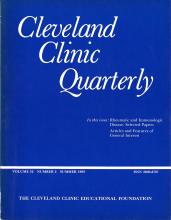ABSTRACT
The authors compared, in 20 subjects, the occipital potentials following pattern reversal stimulation to those following stimulation by light-emitting diodes (LEDs) mounted 5 mm apart in 4 X 4 arrays inside goggles. The resulting waveform resembled that evoked by flash and varied between subjects, with the most useful measurements being those of differences between left- and righteye stimulation. Not all peaks occurred in each control. Thus the method appears to have only limited advantages over those previously available, although it may have applications in young, uncooperative, comatose, or anesthetized patients. Awareness of the limitations of the method should stimulate the search for more reliable techniques for use when pattern stimulation cannot be employed.
- Received November 1984.
- Accepted January 1985.
- Copyright © 1985 The Cleveland Clinic Foundation. All Rights Reserved.






